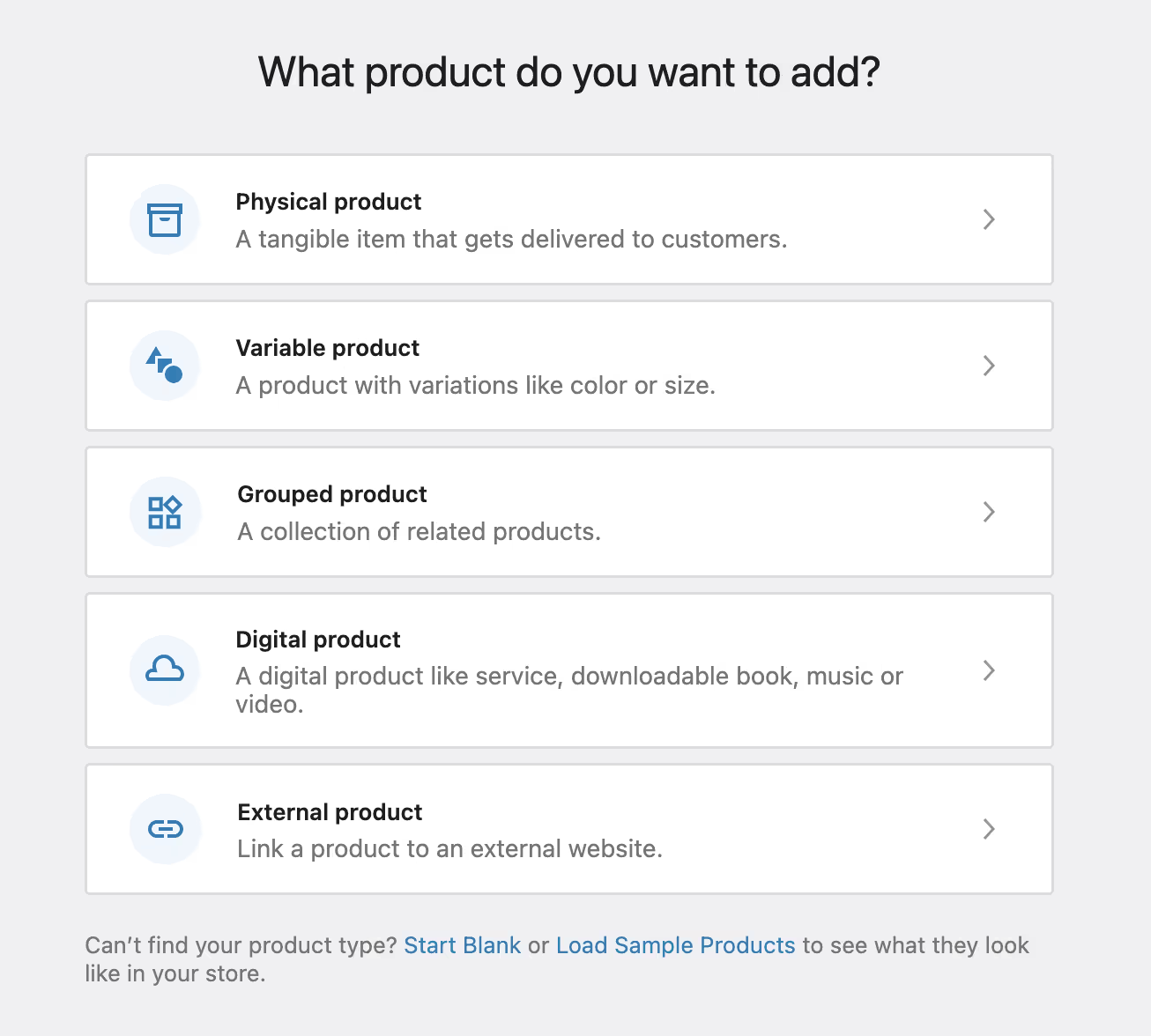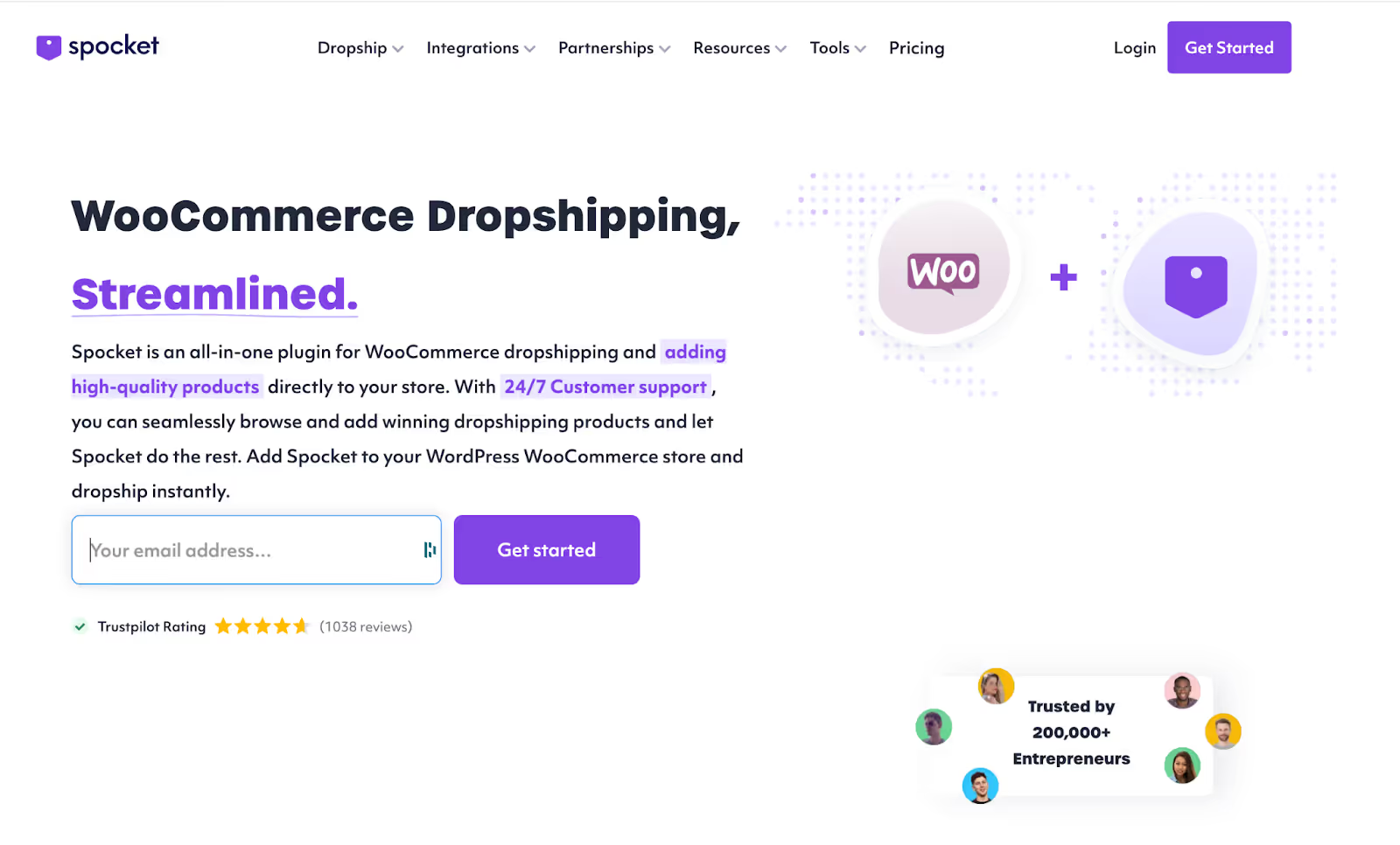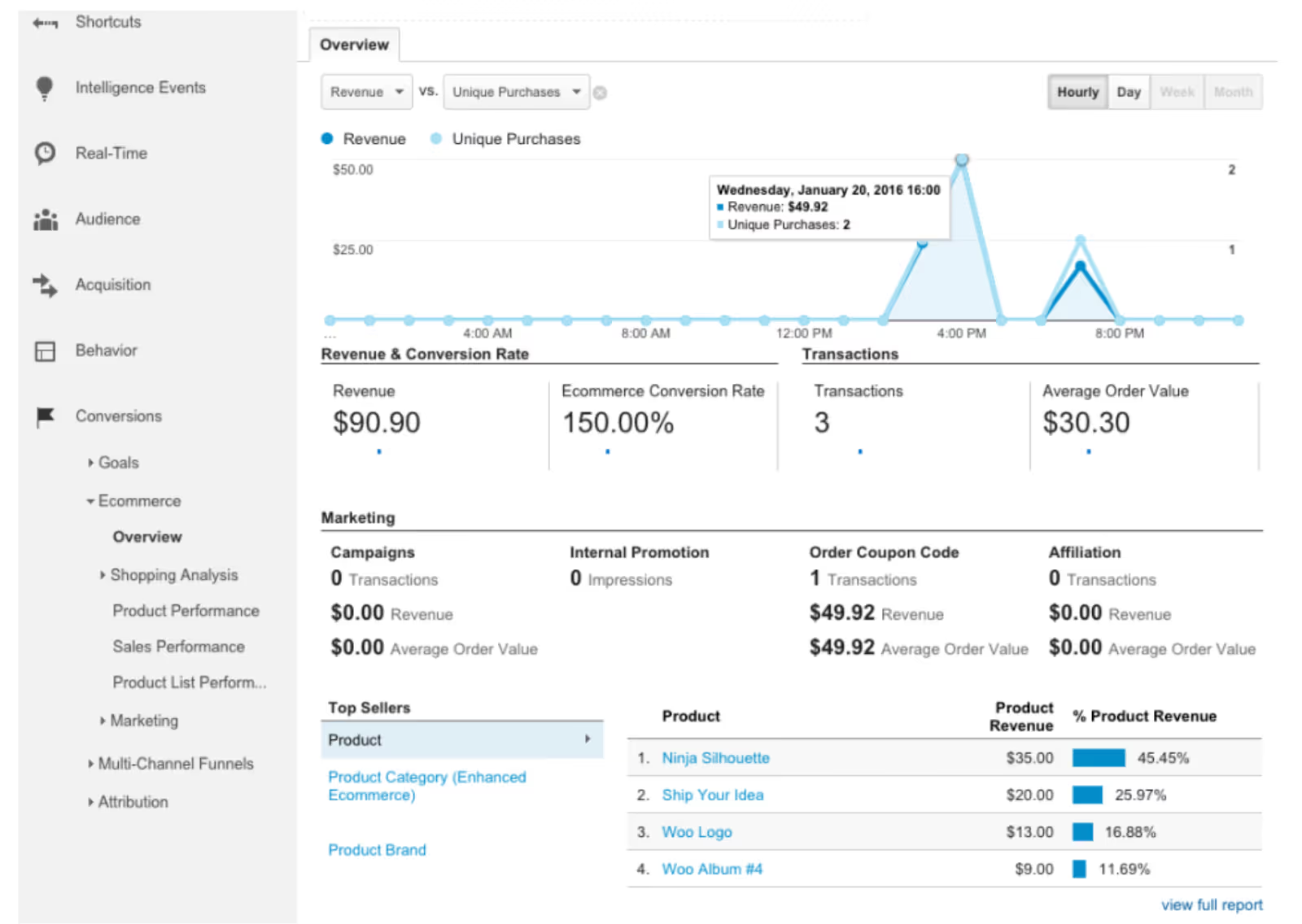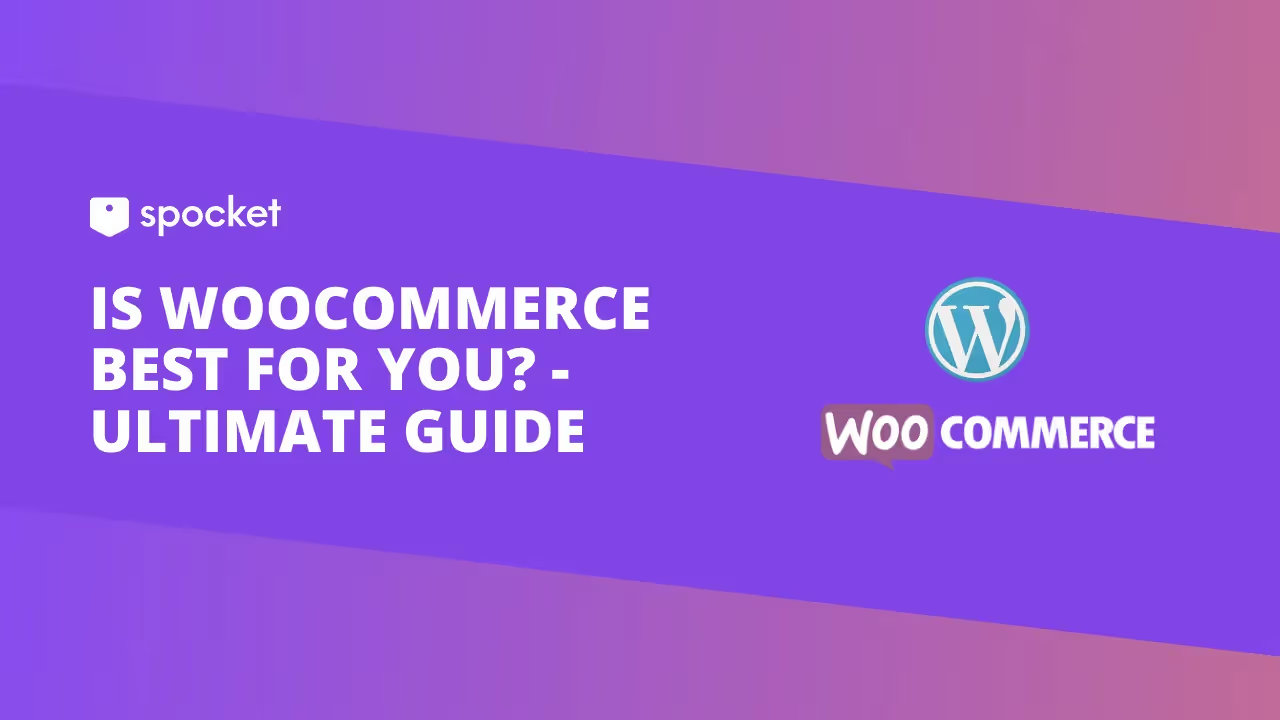WooCommerce is the go-to platform for eCommerce around the globe. It’s known for being incredibly flexible, cost-effective, and surprisingly easy for beginners.
Yet, diving into WooCommerce might seem a bit daunting at first. Many newcomers are unsure where to start or how to properly set up their online store.
No worries—we’ve got you covered. In this ultimate WooCommerce tutorial, we’ll walk you through every step of setting up your store, from the basics to more advanced tweaks. Plus, we’ll share top recommendations for WooCommerce plugins and themes to help your store flourish.
What is WooCommerce?
WooCommerce is free eCommerce software that enables you to turn a WordPress site into a fully operational ecommerce platform.
Traditionally, WordPress site owners had to rely on a combination of plugins and custom coding if they wanted to sell products directly from their sites. But ever since WooCommerce came along, setting up shop has become much simpler.
You can easily install WooCommerce on any WordPress site and manage it directly from the WordPress dashboard—no coding required. Whether you prefer a sleek, modern look or something more traditional, WooCommerce works well with almost any WordPress theme.
Is WooCommerce free?
WooCommerce is open-source eCommerce software that's free to install on WordPress websites. However, that doesn't mean running your online store comes without any costs. You'll need to cover expenses for hosting and a domain name at minimum. Beyond that, there are additional costs for, branding, marketing, and advertising your offerings.
Pros and cons of WooCommerce
Like most software, WooCommerce comes with a set of benefits and drawbacks:
Pros of WooCommerce
- Customization: WooCommerce lets you get creative. You can tailor every part of your WooCommerce webshop, from design to checkout. That’s why it's a favorite for those who want a unique look.
- Integration: Since WooCommerce for WordPress plugs right in, setting up is a breeze. It works smoothly with your existing WordPress site, making it a seamless addition.
- Cost-effective: Starting a WooCommerce shop is budget-friendly. It’s free to install and there are plenty of low-cost options for themes and extensions.
- Flexibility: Whether you're selling beauty products or plants, WooCommerce adapts to your needs. This flexibility makes it ideal for just about any type of business.
Cons of WooCommerce
- Performance: Using too many plugins can slow things down. It's like too many apps on your phone; things start to lag.
- Additional costs: While WooCommerce itself is free, some bells and whistles cost extra. Things like premium themes or special plugins add up.
These points should give you a solid understanding of what to expect when using WooCommerce for your online store.
Prerequisites for Making a WooCommerce Store
To create a WooCommerce website from scratch, you need two main things:
- A domain name: This is your website's address on the internet, such as yourstore.com. It helps customers find your shop online.
- A web hosting service: This service stores all your website files and makes sure visitors can access your site smoothly.
- A WordPress installation: WordPress is software that serves as the foundation of a WooCommerce installation.
Getting a Domain Name
Pick a domain name that’s easy to remember and fits your brand. You can buy your domain from registrars like Namecheap or Bluehost, usually for about $10 to $20 per year. Here’s a tip: Secure different versions of your domain name (.store, .net) to protect your brand. You can also use tools like Spocket’s business name generator to brainstorm ideas for your domain name.
Buying Web Hosting
Choose a hosting provider that offers good speed and support. Bluehost and Hostinger have tailored plans tailored for WordPress and WooCommerce, starting at around $6.99 a month. A useful tip: Look for a hosting plan that can grow with your business, so you have the resources you need as your traffic increases.
The overall cost of setting up and running your WooCommerce store will vary based on the services and resources you choose. By selecting only the necessary services and looking for the best deals on domain registration and hosting, you can manage and control these costs effectively.
Installing WordPress
WordPress serves as the foundation of your online store. It’s where you’ll build everything from the ground up.
Most web hosting providers offer a one-click installation for WordPress, which makes setting it up quite easy and fast. Just a few clicks and you’re ready to start customizing your site.
If your hosting service doesn’t offer a one-click WordPress installation, don’t worry. Reach out to their tech support team. In most cases, they can handle the installation for you.
As a last resort, you can install WordPress manually. It’s a bit more involved, but there are plenty of guides and WordPress WooCommerce tutorials that can walk you through the process. Watching a detailed tutorial will help ensure you don’t miss any steps.
How to Set Up WooCommerce on WordPress
Installing WooCommerce is just like adding any other plugin to your WordPress site. Here's a list of steps to get you started.
1. Install the WooCommerce Plugin
Head to your WordPress admin panel and go to Plugins > Add New. In the search box, type in "WooCommerce." You'll see WooCommerce appear in the search results. Click the ‘Install Now’ button next to it.
WordPress will download and install the WooCommerce plugin for you. Once it's installed, you'll see an ‘Activate’ button. Click it to activate WooCommerce on your site.

2. Use the Setup Wizard
After activating WooCommerce, a setup wizard will appear on your screen. You don’t have to walk through it, but it’s good if you do so as it will help you configure many important settings.
First, enter your business’s address in the store location and click Continue. Then, choose your product type, industry, and other business info.
You will also get the option to add recommended business features. Go over them quickly to see if any fit the needs of your store.
Finally, select your desired theme to apply or continue with your existing theme. Note that anything you apply during the initial WooCommece setup phase can be changed later on if necessary.
3. Customize Your Store
Customizing a WooCommerce store involves choosing an ecommerce-friendly theme. Look for themes that are easy to navigate, work well on mobile devices, and load quickly. This helps ensure your customers have a great shopping experience.
Here are three top WooCommerce-ready themes to consider:
- Ocean WP: This theme is very customizable, perfect for tailoring specific details to fit your store's style.
- Shoppe: It includes its own page builder, making it easier to optimize landing pages for your products or special promotions.
- Astra: Known for its strong WooCommerce support, Astra comes with pre-built templates for product and shop pages, plus offers quick one-click setups.

4. Add Products
The next step in configuring WordPress and WooCommerce involves adding products to your online store. WooCommerce lets you sell several types of products, including:
- Physical product
- Variable product
- Grouped product
- Digital product
- External product

Choose the type of products you want to add, then follow these steps:
- Click Products » Add New on your WordPress dashboard. Then choose a template that fits your product type—be it physical, digital, or variable.
- Provide essential details like product name, description, and category. Organizing your products into categories helps customers easily find what they need.
- In the ‘Product Data’ section, specify the type of product you are adding, and fill in necessary details such as price, shipping information, and any variations if it’s a variable product.
- Add images and descriptions and create a gallery if needed. Also, write a concise and catchy short description that appears on product preview pages and helps to attract customers.
- Once you've filled in all the details, review everything to ensure accuracy and completeness, then click ‘Publish’ to make your product live on your website.
5. Set Up Payments
Now, let's get your store ready to accept payments. This part is crucial because, well, we’re here to make some sales.
Head over to the WooCommerce » Home page on your dashboard. You’ll see the WooCommerce setup checklist there. Look for the ‘Set up payments’ option and give it a click.
This will bring up a list of payment processors you can use. Options include Stripe, PayPal, Klarna, or even direct bank transfer and cash on delivery if you like keeping it old school.
Choose the payment gateway that suits your needs and follow the simple instructions on the screen to get it up and running.
If down the line you decide to add more payment methods, just go to WooCommerce » Settings » Payments. Adding new payment options later is a breeze.

6. Configure Tax Settings
The next step in this WooCommerce guide is configuring your tax rates. It’s important to do so because taxes affect how much your customers are charged at checkout.
WooCommerce offers a few ways to handle this: you can use WooCommerce Tax, Avalara, or set them up manually. There’s also an option to select ‘I don’t charge sales tax’ if your business is exempt.
For the purposes of this tutorial, we’ll go through how to set up taxes manually.
Once you choose the manual option, you’ll be directed to the WooCommerce > Settings > Tax tab.
Simplify enter your tax details and specify the country, state, city, and zip code where you’re required to collect tax. Then, input the tax rate and give it a label, like 'sales tax' or 'GST'. Remember to click the ‘Save changes’ button to ensure all your tax settings are stored.
7. Set up Shipping
Configuring your shipping options is another important step in your WooCommerce store setup. Start by going to the WooCommerce setup guide on your dashboard and clicking on the ‘Set up shipping’ task. This will bring you to the page where you can manage all your shipping details.
Configuring Domestic and International Shipping
- Domestic shipping: Enter the shipping costs for deliveries within your country. You can offer free shipping by setting the cost to zero, or you can specify a flat rate.
- International shipping: If you plan to ship globally, enable the 'Rest of the world' option and set up different rates for different regions by creating shipping zones.

Shipping Classes
If your products vary in size, weight, or packaging, it's a good idea to set up shipping classes. This feature lets you apply different shipping rates for different types of products, making sure the costs reflect the shipping needs.
Finalizing Your Setup
After inputting your shipping costs and details, click the ‘Proceed’ button to save your settings
Install WooCommerce Shipping (Optional)
If you're looking to streamline your shipping process further, consider installing WooCommerce Shipping. This tool enables you to print shipping labels from home. If you don’t need this feature, just click 'No thanks' and continue with your setup.
8. Install Extensions
Harnessing the real capabilities WooCommerce involves tapping into its extensive range of extensions and add-ons. These tools are designed to extend your eCommerce site’s functionality and are installed just like any WordPress plugin.
Some of the most recommended WooCommerce shop extensions are:
SeedProd: Build beautiful, functional landing pages quickly with SeedProd’s drag-and-drop builder. Ideal for promoting products or special events without needing coding skills.
AffiliateWP: Easily set up and manage an affiliate program with AffiliateWP. Expanding your marketing reach through affiliates can significantly increase your store’s visibility and sales.
AIOSEO: Boost your store's search engine visibility with All in One SEO. Effective SEO practices increase your site’s traffic and attract more customers.
WPForms: This user-friendly plugin lets you create contact forms, customer surveys, and shipping calculators with ease.
Spocket: Connect with global suppliers for dropshipping using Spocket, which simplifies product sourcing and inventory management.

9. Secure Your WooCommerce Online Shop
With all the hard work you put into setting up your online store, securing it is non-negotiable. Always keep your WooCommerce, WordPress, and all plugins up to date as part of your WooCommerce setup checklist. These updates often patch security holes that could leave your site vulnerable.
For your site’s defense, install solid security plugins like Wordfence. They regularly scan your site for malware and keep the bad guys out. Don't forget to beef up access security too—use strong, unique passwords for your admin accounts and turn on two-factor authentication for an extra layer of safety.
Encrypt customer data during transactions with SSL encryption to protect sensitive information. And always, always make regular backups of your site and store them off-site. This way, if something goes sideways, you can get back on track quickly without losing your hard work.
10. Set up Analytics
Running a WooCommerce site without analytics is like shooting hoops in the dark—how do you know if you're scoring? To fully understand how your site performs, you need robust eCommerce analytics.
Here’s a list of essential analytics tools:
- MonsterInsights: This plugin makes connecting your site to Google Analytics a breeze. It displays key performance indicators right in your WordPress dashboard, so you can easily track and analyze user behavior.
- Jetpack by WordPress.com: Known for security, Jetpack also shines with its detailed analytics features. It provides valuable insights into how visitors interact with your site.
- WooCommerce Google Analytics Integration: This plugin integrates your WooCommerce store with Google Analytics, allowing you to track comprehensive traffic and sales data.

Understand your customer's journey and refine your marketing strategies accordingly.
Utilizing these analytics plugins will give you the visibility you need to target your efforts effectively and grow your WooCommerce store.
11. Learn WooCommerce SEO
Learning SEO optimization can seem complex, but it's crucial for driving more traffic to your new WooCommerce store. SEO touches on everything from your product descriptions to how your site is structured.
Essential SEO Practices Include:
- Optimize Product and Category Titles: Ensure your titles include relevant keywords that accurately describe your products. This helps improve your store's search engine visibility.
- Craft Effective Meta Descriptions: These snippets appear in search results and should be engaging and packed with key phrases that reflect the content of your page.
- Categorize Products Clearly: Using categories and tags not only organizes your store but also helps search engines and customers find relevant products more easily.
- Simplify Your URLs: Clean and concise URLs are easier for search engines to crawl and help improve your site's SEO.
If you're unsure of doing that on your own, consider using SEO tools like AIOSEO. Such plugins automate many of the SEO tasks, from crafting meta tags to optimizing your content’s structure for better rankings.
Final Verdict - WooCommerce
That brings us to the end of our WooCommerce walkthrough for beginners.
As you’ve learned, setting up your online store with WooCommerce empowers you to take control of everything from design to logistics.
Use the steps mentioned above to set up WooCommerce for your site—soon, you'll see your efforts turn into a functional online storefront.
WooCommerce FAQ
Is WooCommerce easy to use?
Yes, WooCommerce is user-friendly, especially if you're familiar with WordPress. The setup wizard guides you through the initial configuration, and the interface is intuitive for managing products, orders, and customer data.
What is WooCommerce used for?
WooCommerce is used for creating online stores within the WordPress platform. It supports a wide range of eCommerce activities including selling physical and digital products, managing inventory, processing payments, and handling shipping.
What kind of training is available for WooCommerce?
WooCommerce training can be found through various online platforms that offer tutorials, video lessons, and articles. Websites like WPBeginner, Udemy, and Lynda provide comprehensive training resources to help you master WooCommerce.
Where can I see WooCommerce examples?
Many online stores use WooCommerce, ranging from small businesses to top global brands. For inspiration, look at Badeloft or Gilmour. Both these websites showcase different aspects of what WooCommerce can do.
What kind of products can I sell with WooCommerce?
With WooCommerce, you can sell just about anything. This includes physical goods that need shipping, downloadable products like software or ebooks, and services through subscriptions and memberships. WooCommerce's flexibility even extends to specialized uses like bookings, auctions, and dropshipping.
Can I use WooCommerce for dropshipping?
Yes, WooCommerce is an excellent platform for dropshipping. It supports several plugins designed to streamline order management, and vendor handling, and automate the dropshipping process. For beginners, Spocket offers a WooCommerce extension that connects you with high-quality EU/US suppliers to get your journey started.
What are some WooCommerce alternatives?
While WooCommerce is versatile and widely used, other platforms might better suit specific needs. Explore this list of the best WooCommerce alternatives to find the right fit for your business.





































![Woocommerce vs Webflow for eCommerce Website [2026]](https://cdn.prod.website-files.com/5b476bdb731aa1e787a6aa02/667ebc0f617610875ab854a9_Woocommerce%20vs%20Webflow%20(2).avif)


